Gardeners hydrangea (hydrangea) is appreciated for its unpretentiousness and excellent appearance. Shrub can be grown on atypical soils, where it is difficult to obtain high-quality flowering from other crops. For each season, the garden has its own work schedule. Hydrangeas fall care and winter preparations are needed. These events return strength to the plant after flowering and prepare it for the cold.
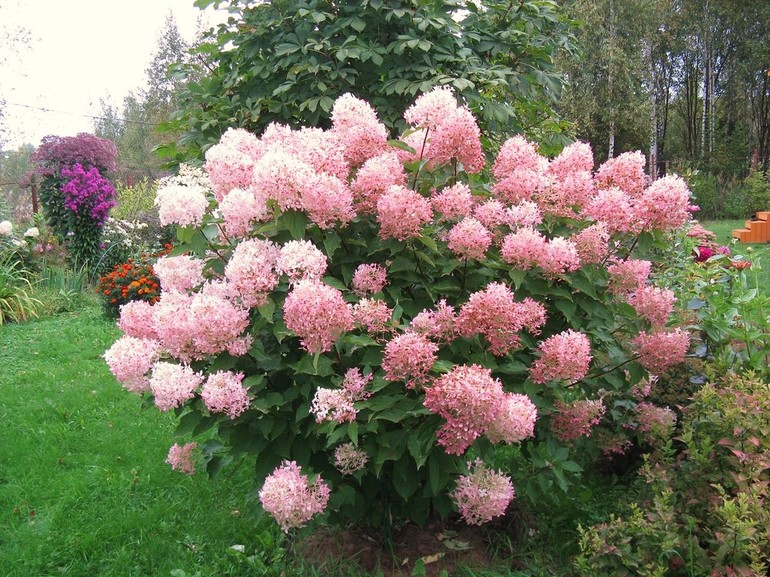
Feeding
You can understand what to do with hydrangea in the fall by examining the needs of the plant and the characteristics of its life cycle. The bush overwinters in the open ground, so it should grow stronger to frost. Behind flowering period and active growth of shoots, the plant loses a lot of strength, you can restore them by applying fertilizers. The first autumn top dressing is carried out in September, the second - shortly after trimming.
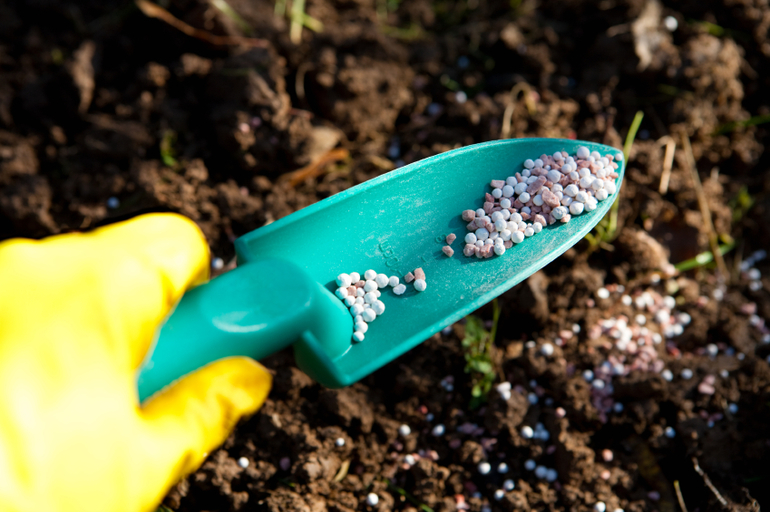
The exact timing of these events depends on the climatic conditions of the region. The gardener is advised to focus on the beginning of leaf fall. Be sure to pay attention to the composition of the fertilizer. They should not contain nitrogen, otherwise the plant will prolong vegetation, young shoots will not have time to ripen before winter and will freeze. It is important that potassium, phosphorus and magnesium predominate in the feed. These minerals will help strengthen the root system and lignify shoots.
In September, under each hydrangea bush, 5 l of a nutrient solution prepared from 2 tbsp. l superphosphate, 2 tbsp. l potassium sulfate and 10 liters of water. Nutrient composition is applied to moist ground. You can also use specialized autumn fertilizers for hydrangeas. Those who prefer organic can use:
- mullein infusion;
- humus:
- humus.
The second top dressing is recommended to be carried out 2 weeks after trimming. Hydrangea must first recover. This time, preference should be given to phosphorus-potassium fertilizer, which is applied in the form of a solution or granules. In dry weather, it is better to apply top dressing in liquid form. Granules are used when it rains outside.
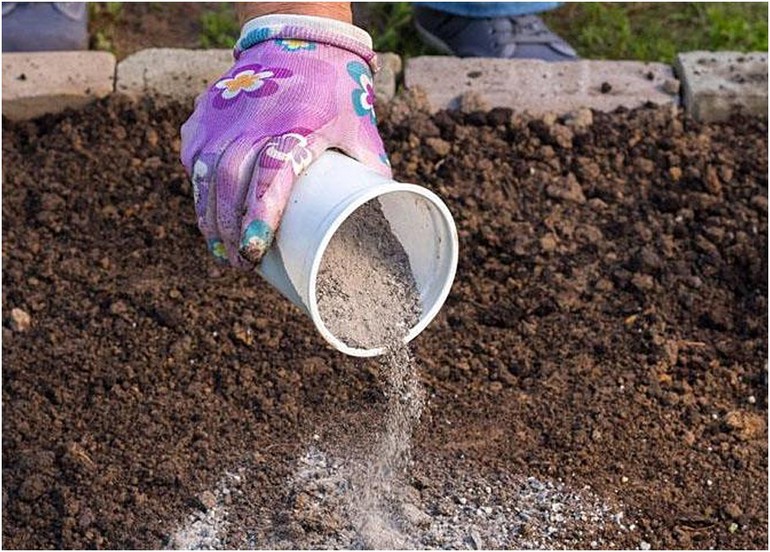
Before sheltering under a hydrangea bush, you can decompose compost or humus. The fertilizer will slowly decompose and warm the roots, and in the spring, along with thawed snow, it will penetrate the soil and feed the plant, providing it with active growth.
Autumn pruning rules
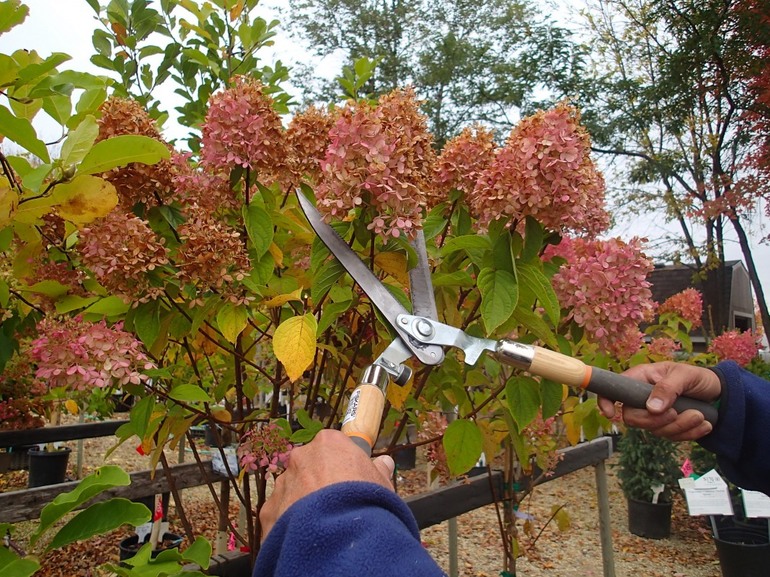
Not everyone believes that hydrangea should be cut for the winter. Some summer residents believe that the bush may well form on their own, while others prefer to prune in the spring. However, experts insist on the need for autumn shrub mowing. The bush is cleaned of sick, weak and damaged branches, and healthy shoots are shortened. This should be done, since in the spring not everyone has time to get to their garden plot early, when hydrangea has not yet awakened from sleep.
The important point is that after the start of sap flow, pruning is no longer possible. It’s better to set aside time for it in late autumn, and in the spring to remove the branches affected by frost. More often than others, three types of hydrangea are grown in Russia: paniculate, large-leaved and tree-like. Each of them has its own pruning rules, taking into account the characteristics of the plant:
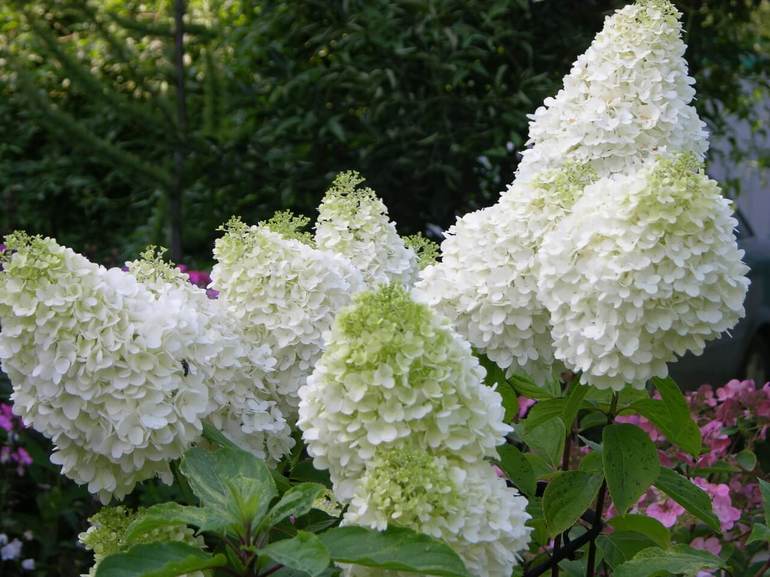
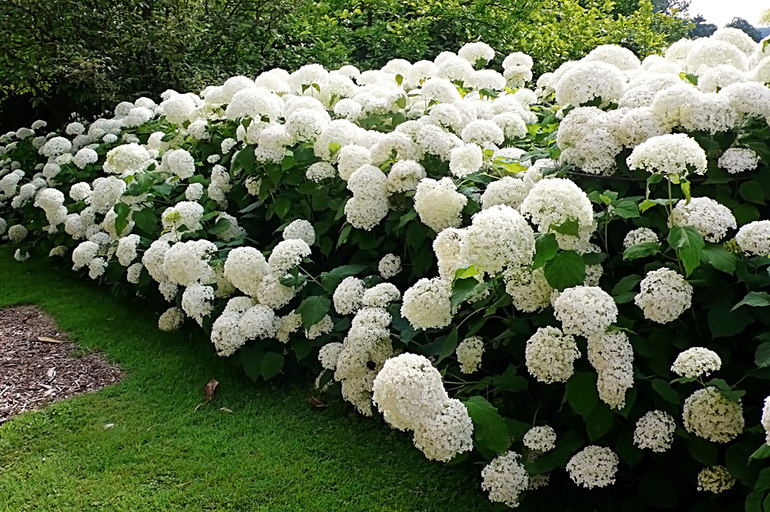
- Panicle hydrangea It is a large shrub up to 2.5 m high with a magnificent spherical crown.Pyramidal inflorescences during flowering change color from greenish to white, pink or purple. This species is not subjected to a cardinal haircut. Hydrangea is cut moderately, forming a crown, thinning the bush and rejuvenating it. Skeletal branches are not recommended. If at one point of growth several shoots appeared at once, it is necessary to leave the strongest, and remove the rest. You must also remove weak and damaged branches. If the bush needs rejuvenation, this is done gradually, stretching the process for 2-3 seasons. Old shoots are cut in turn, leaving stumps 10-15 cm high.
- Large leaf hydrangea more suitable for cultivation in southern climates. In terms of decorativeness, it surpasses other types. This hydrangea has very large inflorescences and spectacular foliage. For large-leaved hydrangea, preparation for winter is carried out more carefully, given its low frost resistance. When pruning, you need to remember that the flowers bloom on the shoots of last year. If these branches are greatly shortened, the bush will not bloom in the next season. Shoots that are older than four years old are cut out at the base. Autumn haircut of this type of hydrangea is done in order to clean and rejuvenate the bush. Fresh growth is allowed to winter, because it is on it that flower buds are laid. If young twigs suffer from frost in the winter, they can be cut in the spring.
- Tree hydrangea trimmed in the same way as panicle. For sanitary purposes, remove diseased, broken and dry shoots, cut off the caps of inflorescences. It is also necessary to cut branches growing inside the crown, and zero shoots, which this year did not give flowering. In the next season, there will still be no flowers on these branches, they will only contribute to the thickening of the bush and will take away its strength. Powerful skeletal branches are shortened by 2-3 kidneys. This species needs pruning more than others because it has a high growth rate.
Winter preparation dates by region
The main events in preparing hydrangea for winter can be considered pruning and shelter. They occur one after another - when the bush is cut, they cover it. This must be done before the onset of stable frosts, focusing on the weather conditions of the growing region.
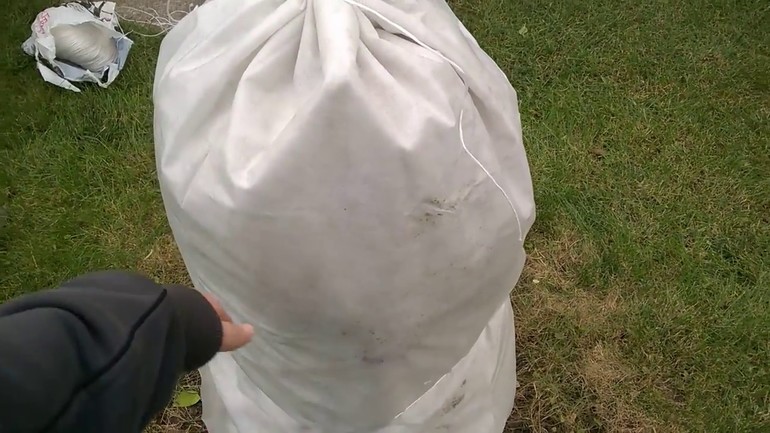
In central Russia, special attention will need to be paid to large-leaved hydrangeas. Treelike and panicled hydrangea can cover not so carefully, making an exception for young specimens. Here they begin to prepare shrubs in the country for wintering with top dressing in September. At the end of October, hydrangea is earthed up, young bushes are also sheltered in the aerial part.
For cultivation in Siberia, only zoned varieties, but they also require winter training. Since August, nitrogen fertilizers are no longer used, and watering is stopped in early September. For panicle hydrangea leaving for the winter implies fixing fragile branches on a wooden support, so that they are not damaged by heavy snowfalls.
In the Urals, hydrangea after flowering should be fed in August. The second top dressing is carried out in a month. Fertilizing will contribute to the accelerated lignification of shoots and root growth. After 12-14 days, they stop watering the shrub, while pruning. The weather in this region is unpredictable. Frosts can come both at the beginning and at the end of October.In any case, before the end of this month, it is necessary to fully prepare and cover the thermophilic hydrangea so that it does not freeze in the winter.
Shelter construction
When constructing a shelter, you need to take into account the variety of hydrangea, the size of the bush and its age. For an adult shrub, you can limit yourself to hilling, snow will play the role of an additional insulation. In young specimens, it is better to shelter the shoots. Features of covering events for each type of plant will be as follows:
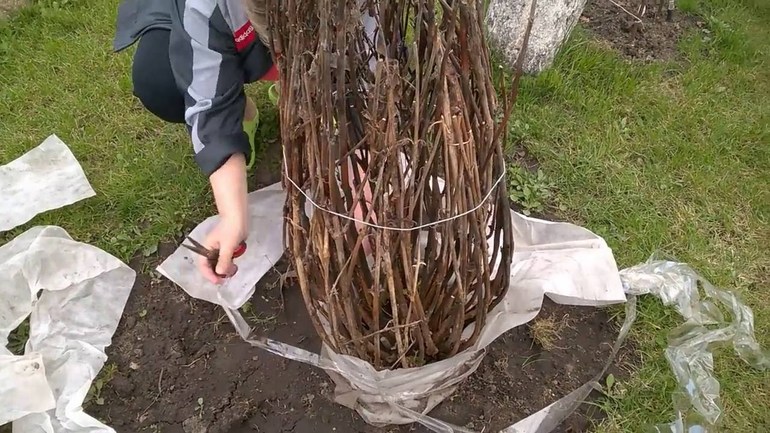

- In panicled hydrangea, the most viable buds are formed in the middle part of the shoots, so freezing of the tops of the branches will not cause the plant much harm. When constructing shelter for her, you need to take into account the weather characteristics of the region. It is not only frost that can play a negative role. With a strong and humid wind, the bush can suffer much more. In the southern regions and in the middle zone for panicle hydrangea there will be a rather high earthing up with a mixture of dry land and peat. AT Siberia and the Urals the branches are bent in the ground and fixed, throwing on top of the spruce branches, burlap or agrofibre. Large bushes are wrapped upright in several layers of non-woven covering material.
- For a thermophilic large-leaved hydrangea, shelter must be done in advance, without waiting for the arrival of subzero temperatures. Before the plant can be covered, leaves are torn off it, leaving them only on the top of the head to protect the apical buds. After that, the bush is divided in half, bending each part to the ground and installing metal arcs above the branches. Then hydrangea is mulched with peat or pine needles. On top of the arc you need to fit two layers of lutrasil, securing it near the ground. Do not use foil for cover because it does not allow air to pass through. It is possible to release the bush in the spring only after the disappearance of frost.
- Treelike hydrangea is a strong and unpretentious plant that needs a minimum of recovery time in spring. With age, the winter hardiness of the culture increases, but in order to prevent it, it is better to cover it. Be sure to spud the roots. The aerial part is insulated in an upright position, having previously tied the shoots to the peg. Above the plants are laid a spruce branch. In the northern regions, the aerial part is additionally covered with two or three layers of spunbond or lutrasil. You can fix the material on the plant using a rope. For large and old bushes, a frame shelter is built, filling it inside with dry foliage. In this case, the upper part of the structure will need to be protected from moisture.
Proper shelter will allow hydrangeas to successfully winter, remaining strong and healthy. With insufficient insulation, the bush will not die, but you will not have to wait for plentiful flowering from it. The tops of shoots, on which flower buds are laid, are usually frozen. In the spring, the covering material cannot be removed abruptly, at first it is only slightly opened for the time of the thaw. It is finally recommended to remove the shelter when the snow begins to actively melt.

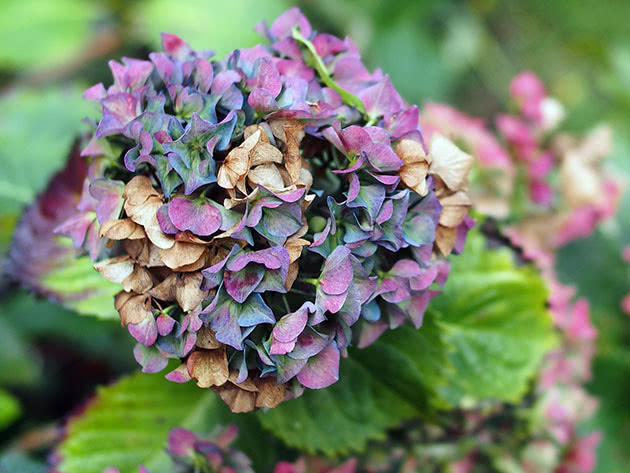 How to propagate hydrangea in the fall: methods, cuttings
How to propagate hydrangea in the fall: methods, cuttings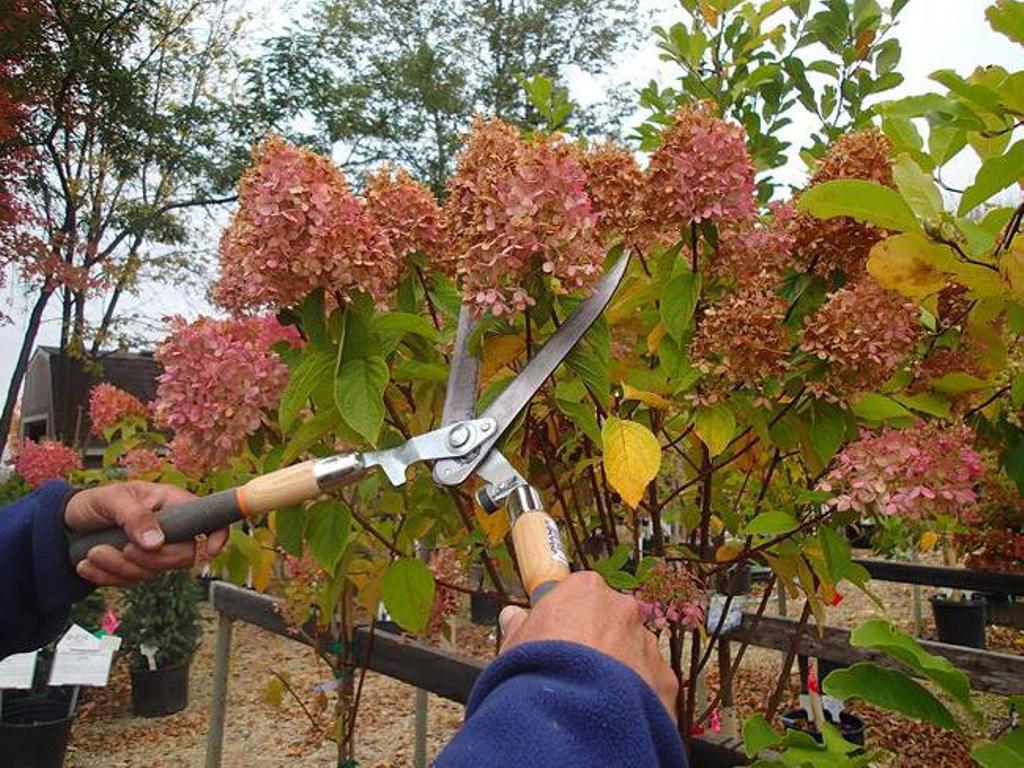 Hydrangea care in the fall and winter preparations
Hydrangea care in the fall and winter preparations How to feed hydrangea for lush flowering
How to feed hydrangea for lush flowering How to hide hydrangea in Siberia for wintering
How to hide hydrangea in Siberia for wintering